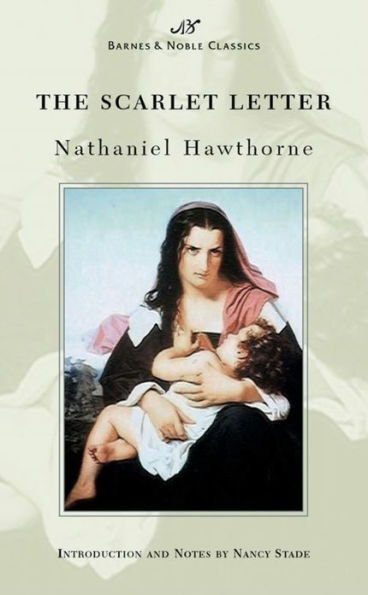- New introductions commissioned from today's top writers and scholars
- Biographies of the authors
- Chronologies of contemporary historical, biographical, and cultural events
- Footnotes and endnotes
- Selective discussions of imitations, parodies, poems, books, plays, paintings, operas, statuary, and films inspired by the work
- Comments by other famous authors
- Study questions to challenge the reader's viewpoints and expectations
- Bibliographies for further reading
- Indices & Glossaries, when appropriate
America’s first psychological novel, Nathaniel Hawthorne’s The Scarlet Letter is a dark tale of love, crime, and revenge set in colonial New England. It revolves around a single, forbidden act of passion that forever alters the lives of three members of a small Puritan community: Hester Prynne, an ardent and fierce woman who bears the punishment of her sin in humble silence; the Reverend Arthur Dimmesdale, a respected public figure who is inwardly tormented by long-hidden guilt; and the malevolent Roger Chillingworth, Hester’s husband—a man who seethes with an Ahab-like lust for vengeance.
The landscape of this classic novel is uniquely American, but the themes it explores are universal—the nature of sin, guilt, and penitence, the clash between our private and public selves, and the spiritual and psychological cost of living outside society. Constructed with the elegance of a Greek tragedy, The Scarlet Letter brilliantly illuminates the truth that lies deep within the human heart.
Nancy Stade is trained as a lawyer and has worked in the federal government and the private sector. She currently lives in Mexico, where she is working on a novel.
- New introductions commissioned from today's top writers and scholars
- Biographies of the authors
- Chronologies of contemporary historical, biographical, and cultural events
- Footnotes and endnotes
- Selective discussions of imitations, parodies, poems, books, plays, paintings, operas, statuary, and films inspired by the work
- Comments by other famous authors
- Study questions to challenge the reader's viewpoints and expectations
- Bibliographies for further reading
- Indices & Glossaries, when appropriate
America’s first psychological novel, Nathaniel Hawthorne’s The Scarlet Letter is a dark tale of love, crime, and revenge set in colonial New England. It revolves around a single, forbidden act of passion that forever alters the lives of three members of a small Puritan community: Hester Prynne, an ardent and fierce woman who bears the punishment of her sin in humble silence; the Reverend Arthur Dimmesdale, a respected public figure who is inwardly tormented by long-hidden guilt; and the malevolent Roger Chillingworth, Hester’s husband—a man who seethes with an Ahab-like lust for vengeance.
The landscape of this classic novel is uniquely American, but the themes it explores are universal—the nature of sin, guilt, and penitence, the clash between our private and public selves, and the spiritual and psychological cost of living outside society. Constructed with the elegance of a Greek tragedy, The Scarlet Letter brilliantly illuminates the truth that lies deep within the human heart.
Nancy Stade is trained as a lawyer and has worked in the federal government and the private sector. She currently lives in Mexico, where she is working on a novel.

The Scarlet Letter (Barnes & Noble Classics Series)
320
The Scarlet Letter (Barnes & Noble Classics Series)
320Paperback(Mass Market Paperback)
Related collections and offers

Product Details
| ISBN-13: | 9781593080129 |
|---|---|
| Publisher: | Barnes & Noble |
| Publication date: | 05/01/2003 |
| Series: | Barnes & Noble Classics Series |
| Pages: | 320 |
| Sales rank: | 52,910 |
| Product dimensions: | 4.13(w) x 6.75(h) x 0.80(d) |
About the Author

Customer Reviews
Explore More Items
At first glance, Three Lives seems to be three straightforward portraits of women living in the early twentieth century. “The Good Anna” describes an exacting German house servant;
Introduction and Notes by Henry Claridge, Senior Lecturer, School of English, University of Kent at Canterbury.
This is a troubling story of crime, sin, guilt, punishment and expiation, set in the



